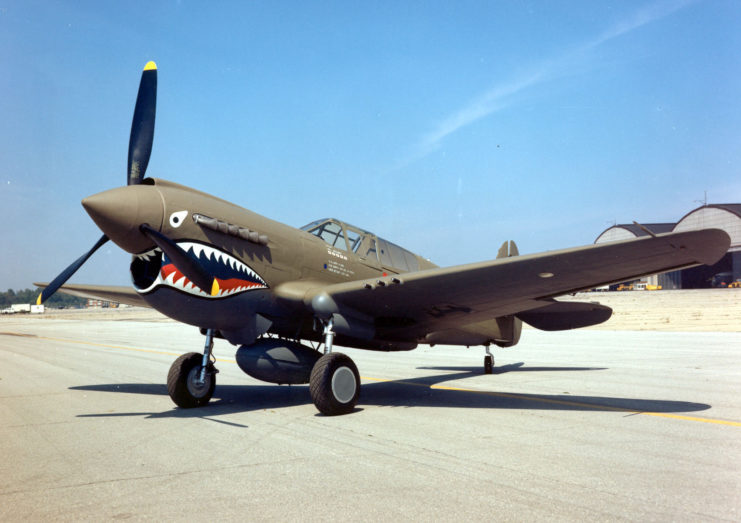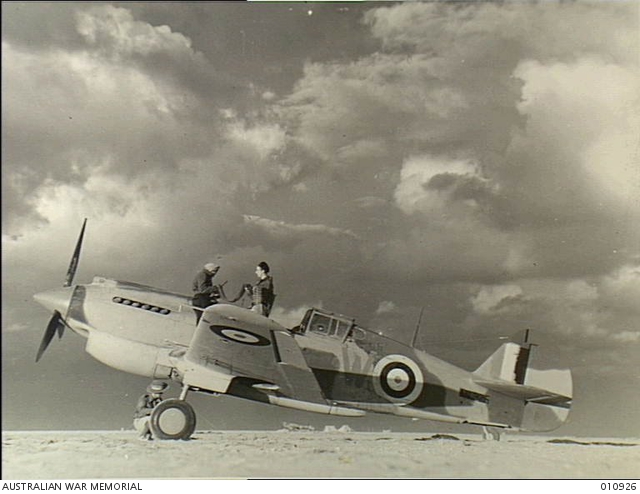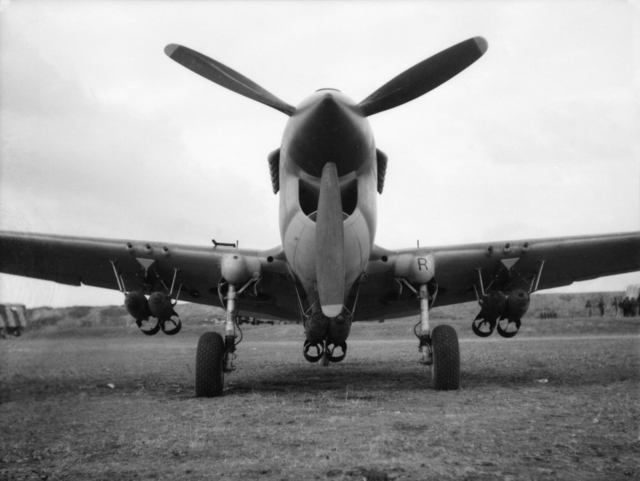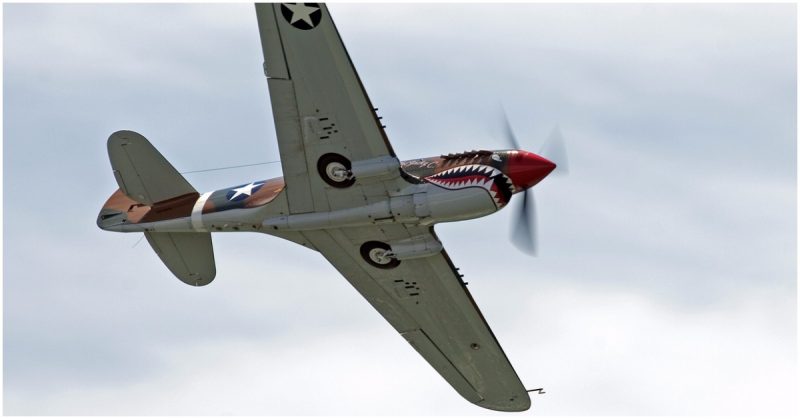An American Fighter
The Curtiss P-40, known as the Warhawk, was an American fighter plane. It went into service during WWII, where it was widely used by the American and British air forces.
Building on the P-36
The P-40 was the latest in a line of Hawk fighters produced by Curtiss for the US military. Its predecessor, the Curtiss P-36 Hawk, was one of the most advanced fighters in the world when it entered service in 1935. It impressed the US Army Air Corps, who placed their largest ever peacetime order for fighters; 210 P-36 Hawks.
P-36As were an important part of the defensive force in Hawaii at the time of the Pearl Harbor attack in December 1941. By then they were widely seen as being out of date, due to the incredibly fast pace of change in early fighter aircraft design. As a result, Curtiss set to work on a new fighter – the P-40.
Flush Rivets
One of the improvements of the P-40 on the P-36 was the introduction of flush rivets. Although each rivet was only a small factor, there were many of them, and collectively they added to the plane’s drag. Rivets that sat flush with the surface, therefore, helped to make the plane more aerodynamic.
Allison Engine
The P-40 had an Allison in-line piston engine. It was liquid-cooled, an advance on the air-cooled Wright Cyclone radial engine that powered the P-36.
Speed
The improvements led to a plane that was faster than its predecessor. The maximum speed of a P-40N was 378 miles per hour, compared with the P-36G’s 322 miles per hour.

Reaching Heights
In some ways, the P-40 was only as good as its predecessor. It could attain an altitude of 15,000 feet in six minutes and 42 seconds, slightly less impressive than the climb rate of its predecessor, which could reach that height in six minutes. On the other hand, the P-40 could go higher. It could perform its job at altitudes of up to 38,000 feet, compared with the 32,350 feet of the P-36.
Reduced Range
The P-40 could not go as far from home as the P-36. The Hawk had a range of up to 650 miles. The P-40’s range was only 240 which was suitable for defensive flying and short-range missions but was a downside in launching strikes deeper into enemy territory.
Another Hit with the USAAC
Like the P-36 before it, the P-40 proved popular with the US Army Air Corps. It took over as the leading fighter of the USAAC’s pursuit squadrons.
Diverted from France
The French military had ordered a consignment of P-40s before Germany invaded their country in 1940. After the fall of France, the planes were instead diverted to Britain, where they joined the fighter squadrons defending that island nation against the advance of the Axis powers.
Also Known as the Tomahawk
The British had also ordered their own P-40s. They were given a new designation in Britain, being named Tomahawks.

Limits of the Tomahawk
During the early years of WWII, Europe played host to some of the most intense aerial combat ever seen. During the Battle of Britain and the international bombing raids that followed, as well as aerial cover for invasions of Poland, France, and Norway, there was fierce fighting in the skies.
In those conditions, fighter planes were tested to their limits. The Tomahawk did not live up to the hopes of the Royal Air Force. Its engine was not powerful enough to stand up to the rigors of dog fighting against the best planes Germany had to offer. Instead of remaining in use as a fighter, it was reassigned for use in low-level tactical reconnaissance work.
Successes in China
100 Tomahawk IIs were sent from Britain to China, where the American Volunteer Group used them. They had far greater success against the Japanese planes.
Arrival of the P-40D
Despite the limitations of the Tomahawk, the British ordered a new version of the P-40. It was the P-40D, which was given the name Kittyhawk. The name is sometimes mistakenly used to refer to all P-40s.
The first Kittyhawk flight took place in May 1941.
Upgraded Armament
The improvements made to the Kittyhawk included changes to the weaponry the P-40 carried. Guns that had previously been located in the nose were replaced by four 0.5 inch machine-guns mounted in the wings.
A rack could also be added to the underside of the Kittyhawk allowing it to carry a 500-pound bomb.

Fighting in the Desert
P-40s played an important part in the North African campaigns. Fighter-bombers were useful in attacking supply convoys and troops moving around Tunisia. The Kittyhawk gained a particularly impressive reputation for its service in the western desert.
Neville Duke
One of Britain’s most impressive test pilots, Neville Duke achieved many of his successes while flying P-40s. In the skies above Africa, he destroyed 5 Axis planes while flying Tomahawks and another 12 while piloting Kittyhawks.
Carrier Service
The P-40 was not designed for service on aircraft carriers. Planes built for the US Army were made as light as possible, to make them maneuverable in a dogfight. Those designed for the Navy had to be rugged so they could withstand being launched by catapults and brought to an abrupt stop by hooks and wires on a carrier.
In the build up to the American invasion of North Africa in 1942, tests found that P-40s could be safely launched from carriers, provided a few modifications were made. Adjustments and training were hastily done so they could provide air cover during Operation Torch.
When the US Army Air Force’s 33rd Fighter Group arrived in Africa aboard the USS Chenango, they did so with 76 Warhawks.
Source:
Francis Crosby (2010), The Complete Guide to Fighters & Bombers of the World
Orr Kelly (2002), Meeting the Fox: The Allied Invasion of Africa, from Operation Torch to Kasserine Pass to Victory in Tunisia
